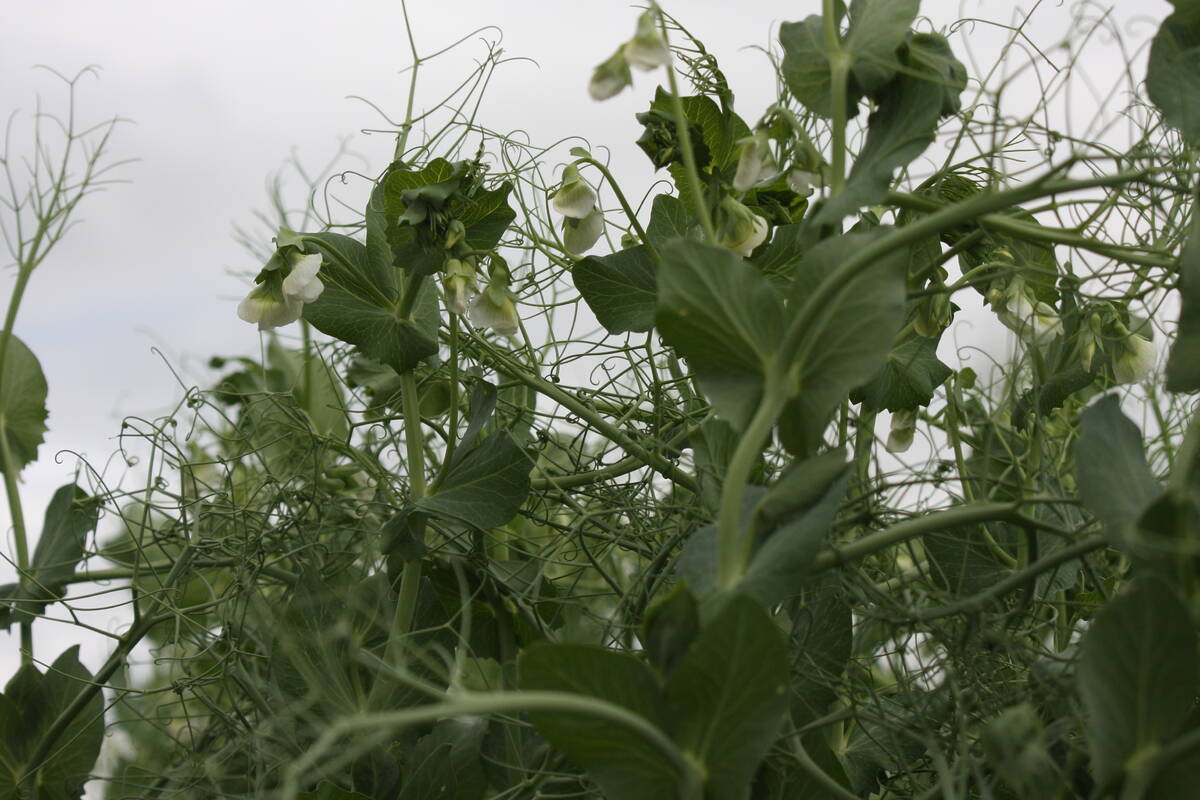Corn, soybean estimates lower than expected | Many analysts don’t accept the USDA’s latest yield projections
Crop prices turned away from their seemingly endless downward course late last week and early this week, but some crop market analysts say they doubt the market has turned around for good.
“We have a good chance of getting a five in the front ($500 per tonne canola future price) for a brief moment, but I still think most farmers are looking out their back door saying, ‘There’s a big crop coming,’” said analyst Lorne Boundy of Paterson GlobalFoods.
“Everyone is bullish the yield, so you can be bearish the price.”
Read Also

High pea yields shock farmers
There is going to be a massive pea carryout at the end of this crop year.
Crop futures, especially soybean prices, moved higher in the days before the U.S. Department of Agriculture released several reports Aug. 12, and soybeans and canola surged following the release of the USDA crop production estimate.
USDA estimated that corn production would be 13.76 billion bushels versus more than 14 billion bu. most analysts expected. It estimated soybean production would be 3.26 billion bu. versus 3.36 estimated by analysts.
Those production declines were due to USDA estimates of lower average yields for corn and soybeans, with corn now estimated to have a 154.4 bu. per acre yield, which is a two bu. per acre reduction, and soybeans estimated to yield 42.6 bu. per acre, which is also below analyst estimates.
The differences are large, by report standards, but Boundy said they are not being accepted entirely by analysts.
“Most of the trade don’t believe the corn number,” said Boundy.
That sentiment is part of what explains the lack of limit-up moves following the report’s surprising numbers, and why some analysts believe the rebound is not an end to the bear market in crops.
Many analysts don’t accept the yield projections and are seeing fear of low supplies evaporate from the market.
“We just have so many (corn) acres out there and demand isn’t quite there,” said Mike Seery of Seery Futures.
“The premium is coming out of the market because you can’t have a drought any more. It’s too late in the season.”
Seery said the relentless sell off of crop futures prices has occurred as the U.S. market has moved beyond 2012-13’s declining production and supplies into 2013-14’s improving prospects.
This year should see stockpiles rebuilt and that might not be a one-time event, as the drought was.
“You’re going to have just as many (corn) acres next year if not more. It’s not going to go away. If you have back-to-back years like this that’s where you get really ample supplies, a real glut,” said Seery.
“If we get another 14 billion, 13 billion bu. (corn) crop next year, there’s going to be a big time glut.”
Cereal and feed grain futures prices have trended down for months, but soybeans and canola have only recently succumbed to the downward pressure, falling heavily through July.
Errol Anderson of Pro Market Communications said he thinks they have fallen too far, too fast recently.
“For heaven’s sake, we could have a frost,” said Anderson a few days before the USDA reports were issued.
“This market has really become oversold.”
He thought November canola futures could easily push slightly above the $500 per tonne mark if any production problems are spotted as harvest looms.
But he doubts canola can move above $520 due to the drag-down effect of corn on the whole crops market.
“There’s no doubt there’s too much corn out there,” said Anderson.
Seery has a grim outlook for crop prices:
“I think corn is going to have a 3 (dollar) in front of its price come harvest time,” said Seery.
“I think the (soy)beans have a chance of being in the $10s come harvest time.”
Boundy said the rebound in crop prices shows healthy interest in the crop, but much is due to speculators bailing out of positions and not to buyers trying to lock up supplies.
“I think the longer term trend is still to the downside, and there might be a good opportunity on some short-covering to get some stuff on the books before you have more harvest pressure coming in,” said Boundy.
















